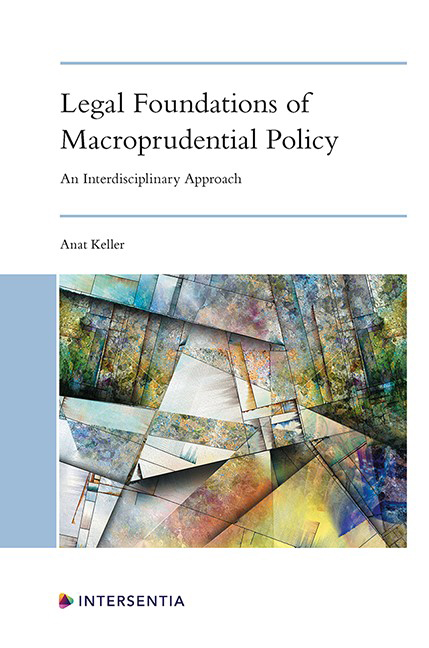Book contents
- Frontmatter
- Dedication
- Contents
- List of Cases
- List of Instruments
- Chapter 1 Introduction and Background
- Chapter 2 A Macroprudential Mandate: How to Operationalise it
- Chapter 3 Institutional and Procedural Design for Macroprudential Regimes: Institutional Models and the Nature of the Decision-Making Process
- Chapter 4 Powers of Macroprudential Authorities and the Use of Soft Law
- Chapter 5 Formulating a Taxonomy of Supervisory Approaches in Macroprudential Policymaking
- Chapter 6 Activating and Calibrating Macroprudential Instruments
- Chapter 7 Independence, Accountability and Transparency of Macroprudential Policy
- Chapter 8 A Non-Dichotomous View of Macroprudential Policy and Other Policy Areas
- Chapter 9 Data Collection and Analysis in Macroprudential Policy: An Epistemic View
- Chapter 10 Th e Global Architecture of Systemic Risk Regulation and Supervision
- Index
- About the Author
Chapter 4 - Powers of Macroprudential Authorities and the Use of Soft Law
Published online by Cambridge University Press: 03 October 2020
- Frontmatter
- Dedication
- Contents
- List of Cases
- List of Instruments
- Chapter 1 Introduction and Background
- Chapter 2 A Macroprudential Mandate: How to Operationalise it
- Chapter 3 Institutional and Procedural Design for Macroprudential Regimes: Institutional Models and the Nature of the Decision-Making Process
- Chapter 4 Powers of Macroprudential Authorities and the Use of Soft Law
- Chapter 5 Formulating a Taxonomy of Supervisory Approaches in Macroprudential Policymaking
- Chapter 6 Activating and Calibrating Macroprudential Instruments
- Chapter 7 Independence, Accountability and Transparency of Macroprudential Policy
- Chapter 8 A Non-Dichotomous View of Macroprudential Policy and Other Policy Areas
- Chapter 9 Data Collection and Analysis in Macroprudential Policy: An Epistemic View
- Chapter 10 Th e Global Architecture of Systemic Risk Regulation and Supervision
- Index
- About the Author
Summary
This chapter explores the nature of powers vested in macroprudential authorities and suggests a benchmark to assessing their effectiveness in achieving a macroprudential mandate. It does so by drawing on the literature on hard and soft law in the international governance field and in particular, the legalisation theory.
Two key observations emerge from the analysis. The first is that macroprudential authorities should have powers that are adaptable to ensure that the regulatory and supervisory perimeter and the set of macroprudential tools can, where necessary, be adjusted and expanded and that data gaps can be addressed. Second, while the “ comply-or-explain “ can provide a reinforcement mechanism to soft powers in the macroprudential sphere, its effectiveness largely depends on the institutional setting supporting it. Third, the precision of macroprudential authorities ‘ outputs alongside a formal and clear decision-making process and pre-established procedures can harden the legal nature of soft macroprudential powers. Furthermore, legitimacy has a key role to play in enhancing compliance with macroprudential measures.
The chapter is organised as follows. Section 1 examines the types of powers that macroprudential policy requires and the current state of powers in macroprudential frameworks around the globe. Section 2 outlines the supervisory powers of the FPC, the FSOC and the ESRB. Section 3 draws on theories developed in international law to conceptualise the legal nature of macroprudential powers and explores legitimacy as a key factor in enhancing compliance and implementation in the macroprudential setting. Section 4 takes the ESRB powers as a case study and analyses the nature of its powers through the prism of the legalisation theory. It analyses the various legal mechanisms that were put in place to reinforce the effectiveness of the ESRB soft powers and the role they play in “ hardening “ these powers. Section 5 concedes that there are limitations to what can be achieved through softer macroprudential supervisory powers; the weaknesses of the “ comply-or-explain “ mechanism and regulatory turf wars are provided as examples for prominent (and far from being theoretical) hurdles.
In the absence of a “ standalone “ international best practice of macroprudential conduct, Section 6 offers a benchmark to assessing the effectiveness of soft/semi-soft powers.
- Type
- Chapter
- Information
- Legal Foundations of Macroprudential PolicyAn Interdisciplinary Approach, pp. 83 - 120Publisher: IntersentiaPrint publication year: 2020



